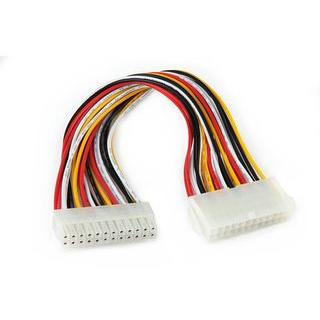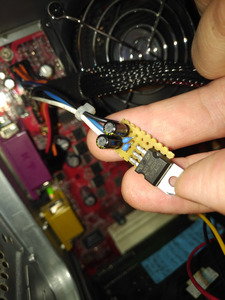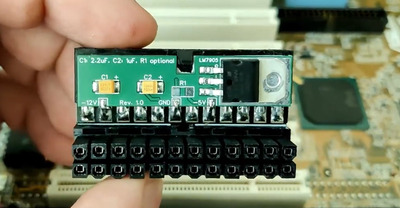Reply 160 of 167, by B24Fox
- Rank
- Member
386SX wrote on 2024-03-15, 16:43:Which is the status of modern "new" retro oriented -5V compatible PSUs for AT mainboards? Are there any new ones I'd use on a AT or ATX late 90 system on the market built in modern times specifically for them?
Just get yourself
1 of these: https://uk.farnell.com/stmicroelectronics/l79 … 141?ost=1087141
and
2 of these: https://uk.farnell.com/panasonic/eeufc1v330b/ … dial/dp/3253996
and you can make and add a -5V pin (white) [pin+wire from a dead PSU], directly to any PSU's ATX connector that is missing it.
The converter is outputing -5V (white) from -12V (blue) and ground (black). So it would be preferable to use it with a PSU that outputs 0.5A (not 0.3A), on the -12V.
I made mine on a little PCB, and a bit more complicated.. but you don't have to.. and you don't need a PCB.
I later isolated mine by putting it in a little plastic case from inside a Kinder chocolate egg.
Alternatively, you can incorporate the convertor into one of these ATX extensions, or ATX-to-AT adapters, that (both) already have the white wire... Which would make things much easier to build, AND detachable! 😀 (just DON'T ever connect them to a PSU that already has the -5V white wire)


(EDITED) TL;DR : This project's electronics are based on the Voltage Blaster project, but DOES NOT connect to an ISA slot, but to the ATX connector.
You can also use these Voltage Blaster pictures to understand how to connect everything:
I hope it's clear



